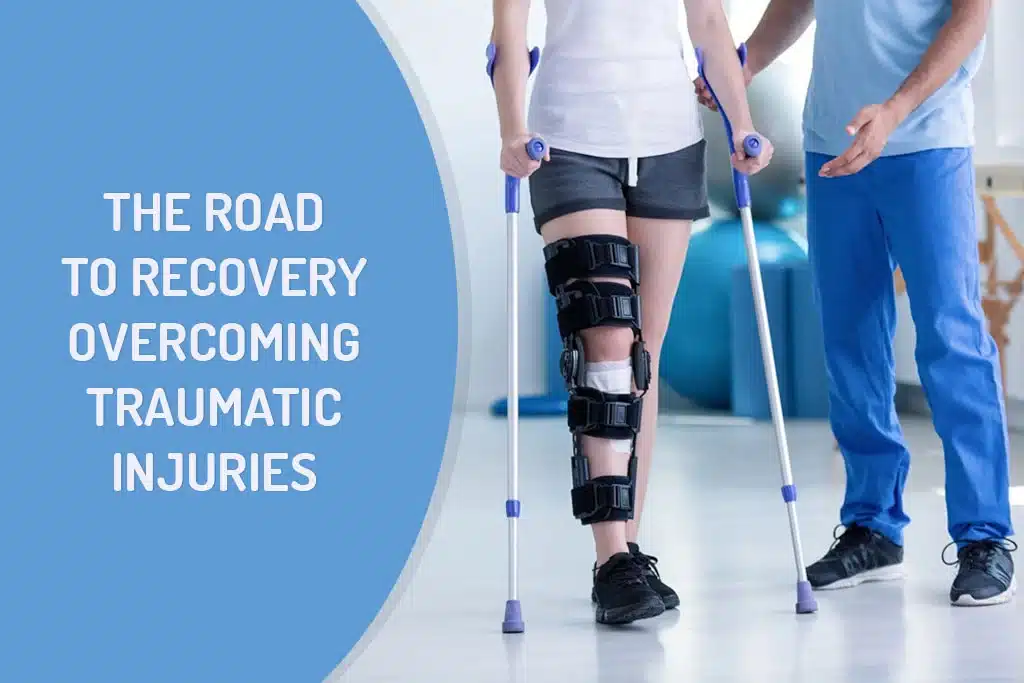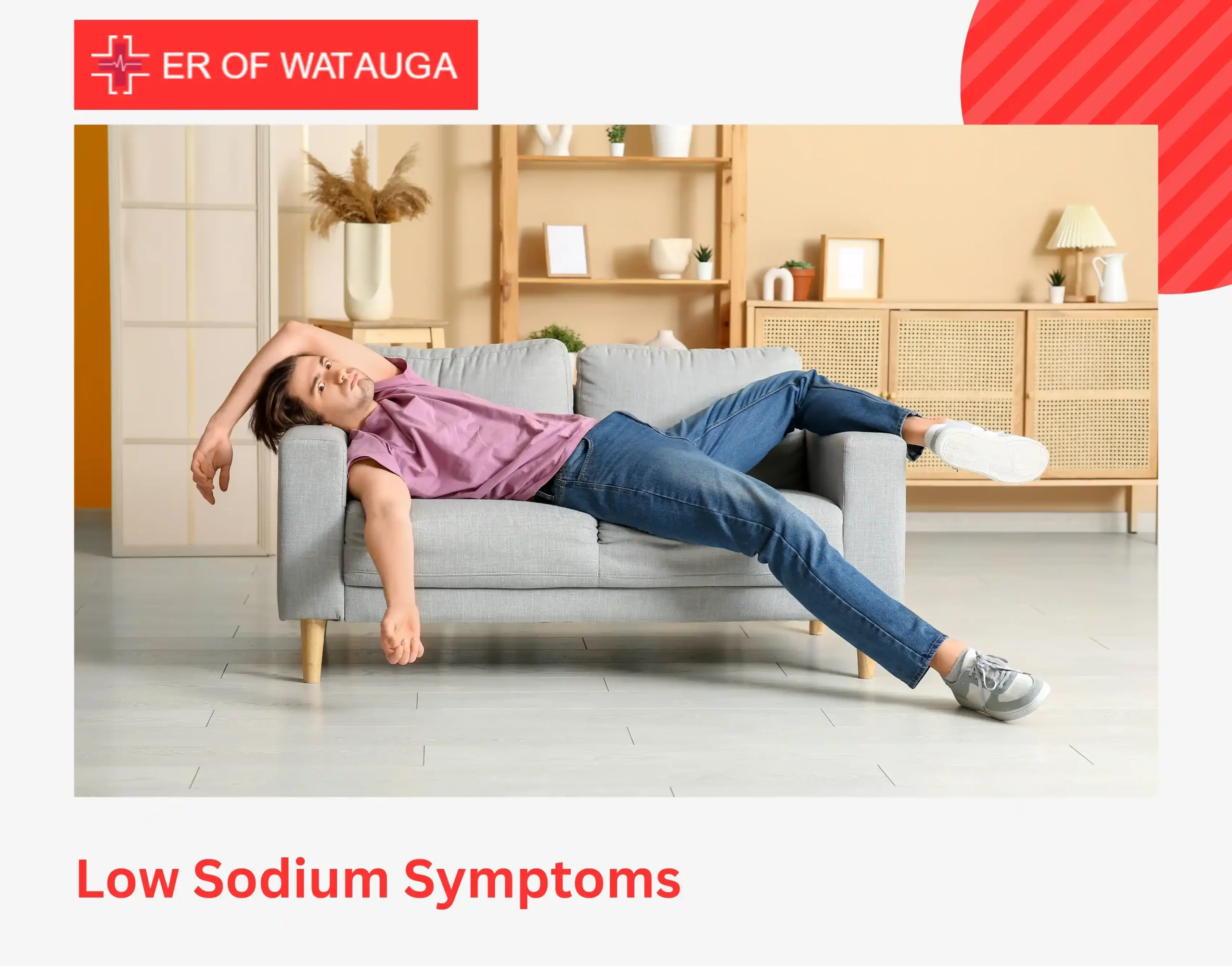Are you searching for a comprehensive guide on Traumatic Injuries? You have landed on the right page. A traumatic event is any incident that causes you bodily, emotional, or psychological pain. You may feel physically intimidated or terrified as a result. In some circumstances, you may be unsure how to respond or may be denying the impact of the occurrence.
You’ll need help and time to heal from the Traumatic Injuries and achieve emotional and mental balance. Many accidents that cause traumatic damage can be handled appropriately in hospital emergency rooms. At the ER of Watuga, we provide the best Traumatic Injury treatment promptly and effectively. Call us now for further information.
Traumatic Injuries are caused by a wide range of blunt, penetrating, and burning mechanisms. They include motor vehicle accidents, sports injuries, falls, natural disasters, and a wide range of other physical injuries that can occur at home, on the street, or at work and necessitate prompt attention. In this blog, we will help you know how to deal with unexpected Traumatic Injuries, and what to expect during the treatment process.
Understanding Traumatic Injuries
Traumatic Injuries are physical injuries that occur unexpectedly and require quick medical intervention. Trauma is caused by a variety of external injuries, which can be blunt or penetrating/sharp. Falls, automobile accidents, crush injuries, assaults, and burns all qualify as blunt trauma. Penetrating trauma is caused by shooting, stabbing, or falling on a sharp item.
The physical meaning of trauma is a physical injury that can cause wounds, fractured bones, or internal organ damage. It is typical for a person to undergo psychological trauma as a result of an unanticipated accident.
Common types of traumatic injuries
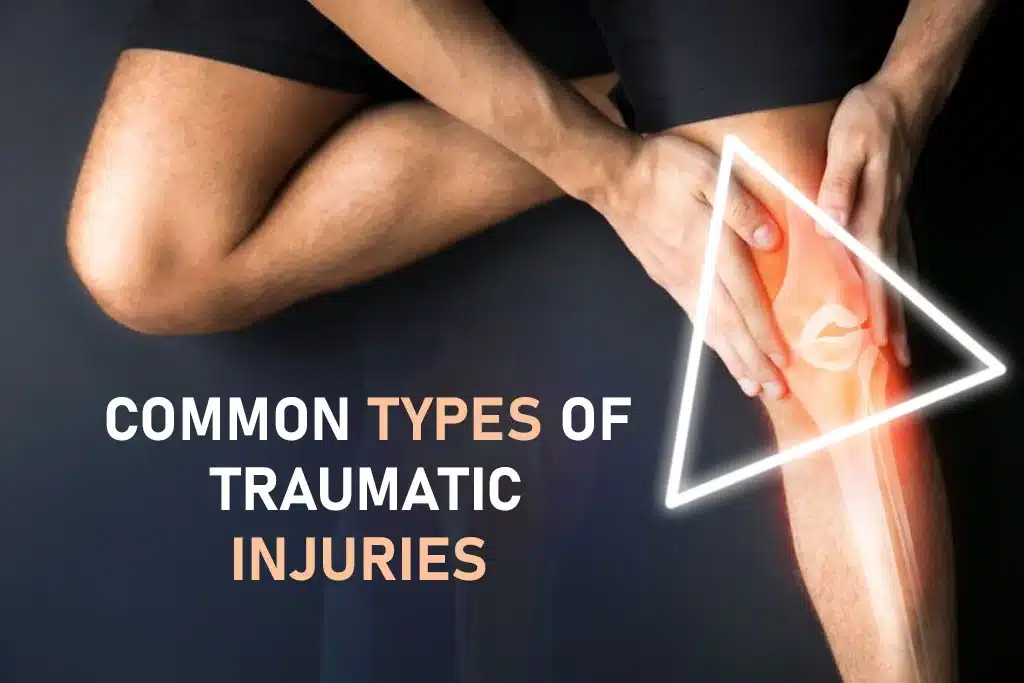
Some of the most common types of Traumatic Injuries include:
- Traumatic brain injuries
- Spinal cord injuries
- Spine fractures
- Amputation (not scheduled)
- Crush injuries
- Concussions
- Broken or dislocated bones
- Skull fractures
- Cuts and puncture wounds
- Collapsed lungs
- Myocardial contusion
- Burns
- Electrocution
- Brain hemorrhages
Immediate Response and Treatment in the ER
Traumatic Injuries can strike at any time, causing agonizing pain both mentally and physically. As time and harm become critical factors, the emergency room (ER) transforms into a battleground where highly trained medical personnel fight for survival. Complex procedures are carried out in the emergency department to preserve life.
Quick medical attention is essential for those who have suffered life-threatening injuries. The likelihood of survival and complete recovery after a traumatic event is highest during the “golden hour,” or the first hour after the event. It is essential to get medical attention at this time. Complications, more difficult jobs, or even death can occur as a result of care delays. A feeling of urgency arises when the body reacts to stress in a way that can cause internal bleeding, shock, and organ malfunction. It would be best if these problems were addressed as soon as possible.
Importance of prompt treatment
Traumatic Injuries affect more than just physical health; these also affect mental and emotional health. ER teams know this and offer mental support along with medical care to patients and their families. This could mean giving stress counseling, putting people in touch with social services, and making sure there is clear contact throughout the process.
Time, skill, and technology all come together in the emergency room to save lives. When you know how important it is to get treatment right away, follow strict processes, and provide care that looks at the whole person, you can better understand the life-saving work that goes on behind the scenes in every emergency room. Remember that speed, skill, and kindness are the most important things when someone is hurt.
Procedures followed in the emergency room for traumatic injuries
A practiced sequence of movements begins when a trauma patient enters. The primary actions that were performed are listed below:
The initial survey
This brief assessment looks at the person’s mouth, breathing, circulation, and functional abilities to search for any imminent life-threatening conditions. To assist with airway control, oxygen, suction, or even intubation may be utilized. Maintaining the stability of the spine and halting significant bleeding are also crucial.
An additional survey
After the patient is stabilized, a more extensive examination is performed to check for any hidden injuries, assess neurological function, and gather details regarding the patient’s medical history and how the accident occurred.
Diagnostic imaging
Ultrasounds, CT scans, and Digital X-rays assist physicians in determining the extent of internal medical problems and the best course of action.
Interventions for treatment
Depending on the type and extent of the Traumatic Injuries, splints, painkillers, IV fluids, wound care, and maybe emergency surgery may be required.
Extended monitoring
Throughout the procedure, vital signs, oxygen levels, and brain function are continuously checked to make sure the patient stays stable and to modify the treatment as necessary.
Traumatic Brain Injuries (TBI)
A traumatic brain injury (TBI) is a significant medical condition that alters how your brain functions. A TBI can be caused by a forceful impact or jolt to the head, as well as being hit with something that penetrates the skull. Traumatic brain injury is a leading cause of death and disability in the United States.
Traumatic brain injuries (Traumatic Brain Injuries) are a leading cause of death and disability in the United States. A TBI can be caused by a forceful impact or jolt to the head, as well as being hit with something that penetrates the skull. These can produce both short- and long-term medical problems that influence all aspects of your life. There are therapy options for TBI. More significantly, there are techniques to keep them from occurring.
Types of Traumatic Brain Injuries
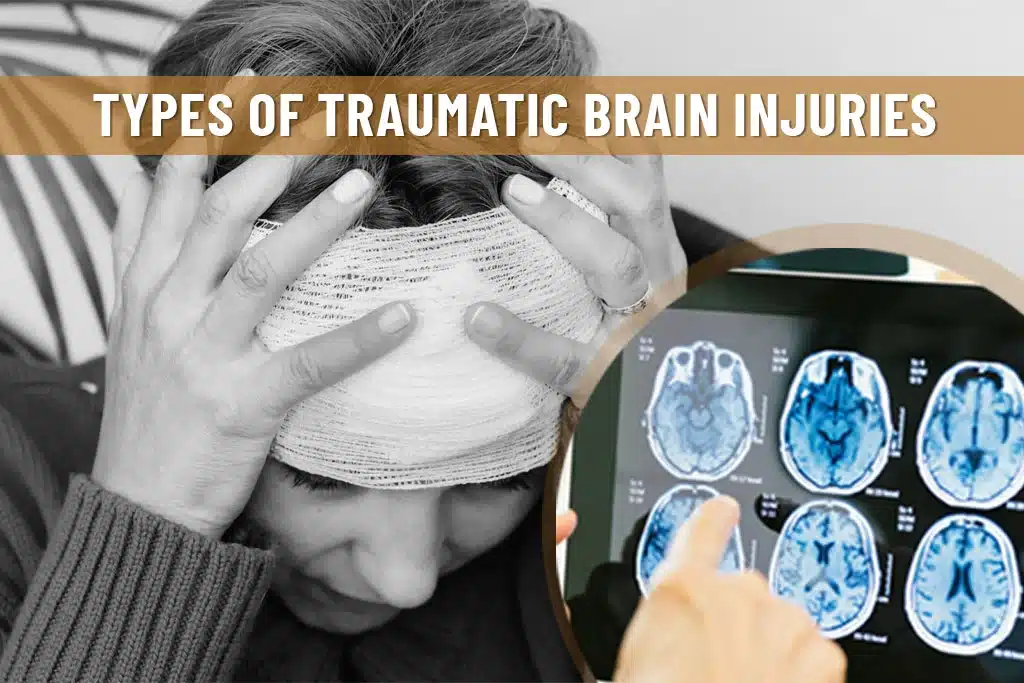
Traumatic brain injuries can be either piercing or non-penetrating (blunt).
Penetrating Traumatic Brain Injuries
A penetrating TBI occurs when something pierces your skull, enters your brain tissue, and damages a portion of your brain. Healthcare providers may refer to these as open Traumatic Brain Injuries. Penetrating Traumatic Brain Injuries can occur if you are struck in the head by a sharp instrument, such as shrapnel, a bullet, or a knife.
Blunt Traumatic Brain Injuries
A non-penetrating TBI occurs when something strikes your head hard enough that your brain bounces or twists inside your skull. Closed head TBI or blunt TBI are terminology used by providers to describe this type of TBI. Non-penetrating Traumatic Brain Injuries can occur as a result of a car accident, a fall, a head injury, an explosion, or an injury sustained while participating in sports.
Furthermore, healthcare experts describe traumatic brain injuries as mild, moderate, or severe. They may use the word “concussion” while discussing mild TBI. They usually classify moderate and severe TBI together.
Mild Traumatic Brain Injuries
More than 75 percent of all Traumatic Brain Injuries are moderate. However, even minor Traumatic Brain Injuries can have serious and long-term consequences. People who have suffered a minor traumatic brain injury may struggle to resume their regular routines, including their ability to work.
Moderate to severe Traumatic Brain Injuries
Most patients who sustain a moderate or severe traumatic brain injury will experience significant and long-term health consequences.
Symptoms of Traumatic Brain Injuries
A traumatic brain injury occurs when your head is hit hard enough to cause your brain to bounce about or twist inside your skull. When this happens, you risk damaging your brain and injuring its blood vessels. A TBI causes chemical changes in your brain, preventing your brain cells from functioning properly.
Traumatic brain injury symptoms differ depending on whether the injury is minor, moderate, or severe. However, all Traumatic Brain Injuries can induce symptoms such as physical pain, difficulty thinking or remembering, and social or emotional problems. Children and adults experience comparable symptoms. TBI symptoms in babies include difficulty feeding or nursing. They may wail inconsolably, which means that nothing you do to comfort them will make them stop crying.
Mild TBI symptoms
Mild TBI symptoms vary. They can appear soon away, a few days, or even a week after you were injured. You may not always recognize the link between a hard bump on the head and a bad feeling. Symptoms also fluctuate as your brain heals from an injury.
Symptoms may include physical problems, difficulties thinking and remembering, social and emotional problems, and difficulty sleeping.
Physical issues
Common symptoms include
- Nausea and vomiting
- Dizziness or balance problems
- Headaches
- Seeing the light bothers your eyes
- Fatigue
- Vision problems including hazy vision
Thinking or remembering problems
If you have mild TBI, you may have the following symptoms:
- Confusion
- Concentrating is difficult
- Difficulty thinking clearly
- Short-term memory loss
- Feeling “slowed down,” as if you were going in slow motion
- Grogginess
Social or emotional concerns
You might have:
- Anxiety
- Nervousness
- Irritability
Mild TBI may disrupt your sleep. You can also have difficulty getting asleep, sleep less than normal, or sleep more than usual.
Moderate or severe TBI symptoms
Moderate to severe TBI symptoms, like those of mild TBI, might alter over time.
Physical issues
Physical problems can be serious, including
- Passing out, or losing consciousness
- A moderate TBI produces unconsciousness for more than 30 minutes but less than 24 hours. A serious TBI leaves you unconscious for more than 24 hours
- Coma
- You have weak arms and legs
- Problems with balance and coordination
- Hearing or visual problems
- Changes in sensory perception, such as touch
Thinking, or remembering
Moderate to severe TBI might induce symptoms such as:
- Confusion
- Concentrating is difficult
- Difficulty thinking clearly
- Short-term memory loss
- Problems communicating
- Grogginess
Social or emotional concerns
Moderate or severe TBI might result in the following symptoms:
- Anxiety
- Nervousness
- Irritability
- Sadness
- Depression
- Anger
- Aggressiveness
- Difficulty controlling behavior
- Feeling more impetuous than normal
Effects of Traumatic Brain Injuries on Individuals

TBI can impair your physical capabilities, cognitive abilities, and behaviors, among other things. The injury can be slight or severe, and it may raise your chance of developing mental health issues such as anxiety and depression, as well as difficulty sleeping.
Rehabilitation Process for Traumatic Injuries
Traumatic Injuries affect a person’s life in addition to their physical health. But rehabilitation is a path, and recovery is a journey. This procedure aims to restore function, independence, and, ultimately, quality of life. Patients, medical professionals, and occasionally loved ones are involved.
Depending on your needs, rehabilitation can take numerous forms, including physical, occupational, and speech therapy, as well as psychiatric and social assistance. All of these are intended to assist you in fully recovering from the effects of your Traumatic Injuries accident.
Rehabilitation may help:
- Improve your capacity to function at home and in the community
- Help cure the mental and physical problems caused by TBI
- Offer social and emotional assistance
- Assist you in adapting to changes that may arise during your recuperation
Goals of rehabilitation
Giving people the resources, abilities, and encouragement they require to live a happy and full life after an illness, accident, or addiction is the primary goal of rehabilitation initiatives. It comes in a variety of shapes and sizes, depending on the individual and circumstance.
Many people use rehabilitation regimens for a variety of reasons. Because of this, each program is customized to meet the specific needs of each patient, ensuring that everyone has access to the appropriate degree of care in a manner that suits them.
While increasing independence through therapeutic programming is the primary objective of rehabilitation programs, additional end goals include:
- Adjust to living with an impairment
- Maximise mobility
- Boost communication in all spheres of life and assist individuals in taking care of themselves once more, including taking a shower or clothes
- Attend to any feeding, swallowing, and dietary requirements.
- Overcome deficiencies in balance and coordination
- Regain your strength, stamina, and mobility
- Collaborate with loved ones and friends so they can provide support as required
- Determine job openings
- Break through any obstacles in life
Traumatic Injuries in Sports
Sports involve a lot of movement, which increases the risk of injury. In any sport, sprains and strains are among the most frequent Traumatic Injuries. It includes the tearing of tissue. While strains affect muscles or tendons (the tissues that connect muscle to bone), sprains impact ligaments.
Preventing sports injuries from occurring in the first place is the best approach to handling them. Consider preventing Traumatic Injuries to be merely one more guideline in the sports manual. Using the appropriate equipment and being aware of the game’s rules can help significantly reduce the risk of injury.
Common types of sports-related traumatic injuries
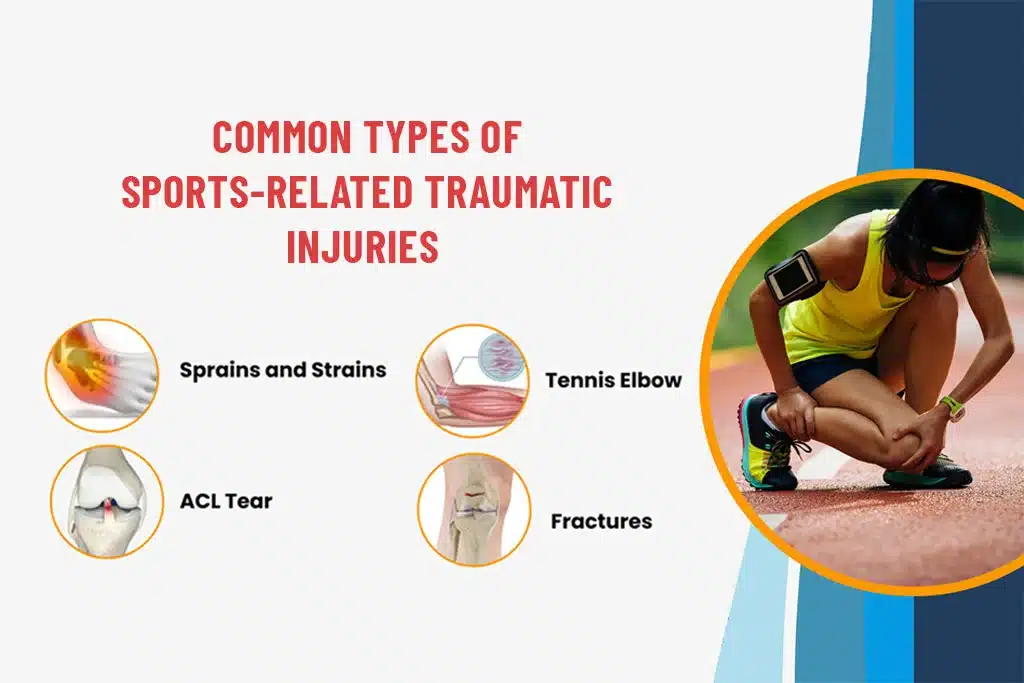
Sports Traumatic Injuries can be categorized into two types: acute and chronic. Acute injuries occur suddenly, such as when a person falls, suffers a blow, or twists a joint, whereas chronic injuries are typically caused by misuse of one part of the body and grow progressively over time. Acute Traumatic Injuries include sprains and dislocations, whereas chronic ailments include shin splints and stress fractures.
Athletes frequently sustain musculoskeletal system injuries such as fractures, dislocations, sprains, strains, tendinitis, and bursitis. The terms are defined below.
Bone fracture
A fracture is a crack in a bone caused by either a fast, one-time injury (acute fracture) or repeated tension (stress fracture). Growth plate fractures are peculiar to youngsters who are still developing.
Dislocation
The term “dislocated” refers to when the two bones that make up a joint separate. The majority of dislocations occur in contact sports such as football and basketball, as well as high-impact sports and those that require extensive stretching or falling.
Sprain
Sprains are stretches or tears in ligaments, which are bands of connective tissue that link the ends of one bone to another. Sprains are caused by trauma, such as a fall or impact that forces a joint out of position.
Strain
A strain is a twist, pull, or tear of a muscle or tendon, which is a cord of tissue that connects muscle to bone. Athletes who participate in contact sports may experience strains, but they can also occur as a result of repeatedly doing the same motion, such as tennis or golf.
Tendinitis
Tendinitis is the inflammation of a tendon, a flexible band of fibrous tissue that connects muscles and bones. It frequently affects the shoulder, elbow, wrist, hip, knee, and ankles. Tendinitis can be induced by a sudden injury, but it is frequently the result of performing the same motion repeatedly.
Bursitis
It is an inflammation of the bursae (plural of “bursa”), which are tiny, fluid-filled sacs that serve as cushions between a bone and other moving elements like muscles, tendons, or skin. Bursitis can be induced by a single event, such as a blow or a tumble.
Self-Healing Techniques for Traumatic Brain Injuries
Many people keep a first-aid kit on hand for unexpected events. It is equally crucial to carry a concussion first-aid kit, which can help to reduce damage and speed up the healing process.
Furthermore, you should protect yourself from injuring your brain again, as repeated injuries raise the likelihood of catastrophic long-term consequences. Other self-care techniques that can help your brain recuperate are:
- Get lots of sleep at night and rest throughout the day
- Increase your activity gradually
- Write down any information that may be difficult for you to recall
- Avoid alcoholic beverages, narcotics, and caffeine during Traumatic Injuries
- Consume brain-healthy foods
- Maintain hydration by consuming plenty of water
- Ask your doctor when it is safe for you to drive, ride a bike, or operate machinery
- Avoid physically demanding activities (such as sports and housework)
- Avoid things that take a lot of thought or focus (such as video games or budgeting)
- Be patient, since healing Traumatic Injuries takes time
Conclusion
Traumatic Injuries are the leading cause of death for people under the age of 45, and it ranks third overall, after heart disease and cancer. A trauma patient is someone who has sustained a major or fatal injury as a consequence of an accident, gunshot wound, or fall. Traumatic Injuries can impact several sections of the body, including the brain, extremities, and internal organs. Traumatic Injuries might be mild or life-threatening. Trauma impacts the patient physically, but it can also have long-term emotional consequences for the patient and others around him or her. As a result, it is beneficial to be able to obtain rapid and comprehensive care following any serious and life-threatening injury. At the ER of Watauga, we provide urgent healthcare service to deal with Traumatic Injuries at first instance. We employ the best team of expert Doctors and innovative tools & technologies to deal with complex Traumatic Injuries. Contact us now to book an appointment.
FAQs
How long does recovery from a catastrophic injury normally take?
The duration varies, but recovery occurs gradually. It is determined by the kind and severity of the injury, individual variables, and compliance with recovery plans.
How does mental health affect the rehabilitation process?
Mental well-being is critical to healing Traumatic Injuries. Addressing psychological components is critical, as a happy mindset promotes general healing and resilience.
How might a support system help in the recovery process?
A robust support network offers emotional, practical, and motivational help. Family, friends, and healthcare professionals all play important roles in negotiating the obstacles of Traumatic Injuries recovery.
Are setbacks frequent in the rehabilitation process?
Yes, setbacks may occur. They are a natural component of the rehabilitation process. Learning to adapt, remaining persistent, and seeking expert counsel can all help you overcome hurdles and move forward.
What recommendations do survivors have for individuals starting their recovery journey?
Survivors value patience, self-compassion, and appreciating tiny accomplishments. Connecting with support groups, making achievable goals, and focusing on progress, no matter how slow, all contribute to a successful recovery.
